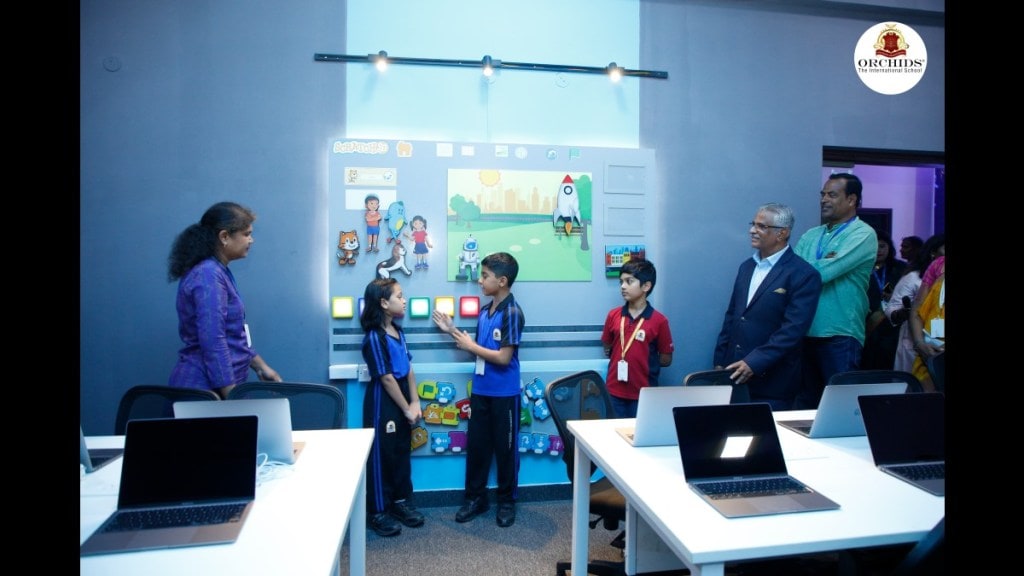By Sudha Rajmohan
According to World Bank data, 107 out of 114 economies had fewer female STEM graduates than male equivalents. The report further states that globally just 18% of girls in post-secondary education study STEM subjects, compared to 35% of boys. It is time for all academicians, educational institutions, and government initiatives to work collaboratively on a war footing to change these statistics. It is yet seen that even simple steps such as incorporating hands-on, project-based learning in STEM subjects to engage female students, and providing practical experiences that ignite curiosity and passion for these fields, have stayed within small spaces of our country’s educational institutions. Closing this gender gap will need an effort at the fundamental stage of schooling and mass awareness. While efforts to create diverse role models in STEM within school curricula can greatly help challenge stereotypes, it will also help to inspire girls to pursue careers in science and technology.
Empowering women through government programmes and scholarships
The focus should be to make women’s participation in innovation, not an exception but to become the norm. Recent government initiatives to empower females in STEM education programs like “Beti Bachao, Beti Padhao” (Save the Daughter, Educate the Daughter) emphasize education for girls, including STEM fields. Yet beyond the call of these initiatives what remains undone is supportive grants through Scholarship Programs, Skill Development Initiatives, Awareness Campaigns, Partnerships with Industry, and multiple Learning Platforms (Online and Offline). The focus has to be high on the introduction of scholarships specifically targeting female students pursuing STEM education. These financial aids aim to reduce barriers and encourage more girls to enter and persist in STEM disciplines.
The imperative goal for every school and Educational Institution
It could be considered essential for every school and higher education institution in our country to prioritize certain value-added initiatives as imperative goals.
● Establishing mentorship programs at the school level as well as connecting girls with women in STEM professions will provide valuable guidance, support, and encouragement.
● Creating a gender-inclusive environment in classrooms by promoting equal participation and recognizing achievements irrespective of gender helps in breaking down barriers for girls in STEM.
● Collaborating with industry partners to organize field trips, workshops, and interactive sessions exposes female students to real-world applications of STEM, making the subjects more relatable and inspiring.
● Offering extracurricular STEM clubs or activities provides additional opportunities for girls to explore their interests and build a sense of community with like-minded peers.
● Implementing policies that ensure equitable access to resources, such as quality STEM education materials and facilities, fosters an environment where all students can thrive and excel.
Awareness campaigns for STEM: need of the our
Many skill development programs focused on STEM have been implemented to equip female students with practical knowledge and enhance their employability in science and technology-related industries. Ongoing awareness campaigns can help in highlighting the importance of gender diversity in STEM fields, encouraging girls to consider STEM careers. These campaigns involving successful women in STEM sharing their experiences to inspire the younger generation at schools and colleges must become part of their annual calendar as a mandate from the educational boards and universities.
Inclusive communities and industry-academia partnerships
A final step towards partnerships with Industry and collaboration between educational institutions and industry partners is visibly increasing in cities and metros and is helping to provide female students with exposure to real-world applications of STEM. Such internships, mentorship programs, and industry-academic partnerships can contribute to a more holistic education in STEM all across the country.
There has been some visible growth in online learning platforms that have facilitated access to STEM education for girls in remote areas. These platforms offer courses, workshops, and resources, promoting self-paced learning in various STEM disciplines but they need to be actively funded and supported by industry giants and government initiatives. The establishment of networks and communities exclusively for women in STEM can create platforms for networking, mentorship, and knowledge-sharing. These networks will provide a sense of belonging and support for female students pursuing STEM education. These developments collectively contribute to fostering a more inclusive and empowering environment for females in STEM.
With this spirit today, we must take inspiration from some of our eminent Indian women in STEM like Sudha Murthy, Kiran Majumdar, Kalpana Chawla, and Mallika Srinivasan who have what it takes to imagine, invent, and inspire the future generation.
The author is the VP Academics at Orchids The International School.


